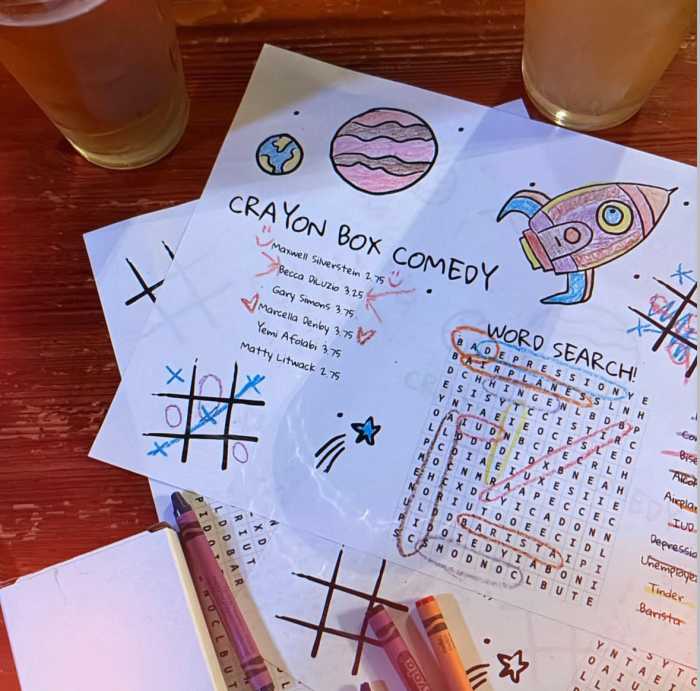About 15 years ago, some friends whose kids went to the same pre-K as ours invited us to visit the bungalow colony an hour upstate where they spend their summers.
“Great!” we said. “But … what’s a bungalow colony?”
As it turns out, it’s a time portal that can transport you back to 1958. There you will find yourself in a world of impromptu coffee klatches, potluck suppers and, best of all, no play dates. Kids just run around and make their own fun.
I know. Surreal.
In practical terms, we learned, a bungalow colony is actually a cluster of small, basic cabins — maybe 10, 20, up to about 100. Usually they’re near a lake, and most of them are an hour or two outside the city. The one we’d been invited to, Rosmarins in Monroe, NY, opened in 1941. There used to be hundreds of these “colonies.” And while different ethnic groups would settle their own enclaves, somehow Jews took to the phenom the most enthusiastically. In fact, the old nickname for the Catskills was “The Jewish Alps.”
Bungalow colonies thrived from the 1920s till about the 1970s, when they started dying out thanks to “The Three As” — airplanes (once people could travel to more exotic locales, they did), air-conditioning (no need for mountain air when you could crank up a cool breeze indoors), and assimilation (once Jews and other minorities were allowed to join clubs and neighborhoods previously closed to them, they didn’t have to hang out just in their own enclaves).
But even as many colonies were closing up — or transitioning to an ultra-Orthodox clientele — Rosmarins not only continued to operate much as it had since it opened, it continued to exist in some kind of time bubble. Run by the same family for nearly 80 years, its cabins still boast linoleum floors and Formica tables. But best of all, kids keep organizing their own games — cards, wall-ball, manhunt (tag at night with flashlights!).
We visited our friends and felt nauseous with envy. Back in the city, we felt we had to watch our kids all the time. Here, our friends actually instructed us to simply let the kids go out and play. We did — and it was heaven!
By the next summer, we had a bungalow of our own, and have been coming ever since. We still quote our younger son walking out the screen door that first summer, saying, “I’m going down to Johnny’s bungalow.” He was 3. And off he went.
When that same boy turned 9 and took the subway by himself, I founded Free-Range Kids, the book, blog, and movement dedicated to the idea that our kids are smarter and safer than society gives them credit for. But I wonder if it wasn’t possibly bungalow life that made me see, with my own eyes, the importance of unstructured, unsupervised time in childhood.
Back in the city, we had the kids in science camp, soccer lessons, all sorts of enrichment. What I’d forgotten was how much more pleasant it is to have free time and figure out how to fill it.
Not that our kids became great novelists or baseball champs just by goofing around. But they did end up spending their summers plain old playing — an activity increasingly rare in this era of supervised, structured activities for kids.
Peter Gray, a Boston College psychology professor and author of the book “Free to Learn,” says that one of the saddest things we’ve done to kids is deprive them of the chance to play together in mixed age groups. For instance, he says: A group of 7-year-olds might not be able to play a game of gin rummy. But if they’re playing with a couple of 9-year-olds, they can. The older kids tell them, “Hold up your cards better! We can see them!” and, “Why did you throw that card out? You need it!” For their part, the 7-year-olds are so desperate to act like the “big” 9-year-olds, they hold it together when they lose, instead of crying like babies.
In this way, everyone gets socialized: The older kids learn patience and empathy. They grow more articulate as they explain the rules to the little kids. And the little kids grow more self-controlled as they strive to be as cool and mature as the fourth graders. They focus. They may even learn some math — without a teacher in sight.
All those lessons kick in when adults back off, which is what parents used to do come June, and what they still do at a bungalow.
Obviously, not everyone can rent a summer place. But everyone can reach back and remember their own summers, and the joy of hours stretching forth without anything to do but play.
As we try to give our kids every advantage, remember that the greatest gift just may be free time. Lots of it.
Have a great summer.
Lenore Skenazy is founder of Free-Range Kids, a contributor to Reaso
























